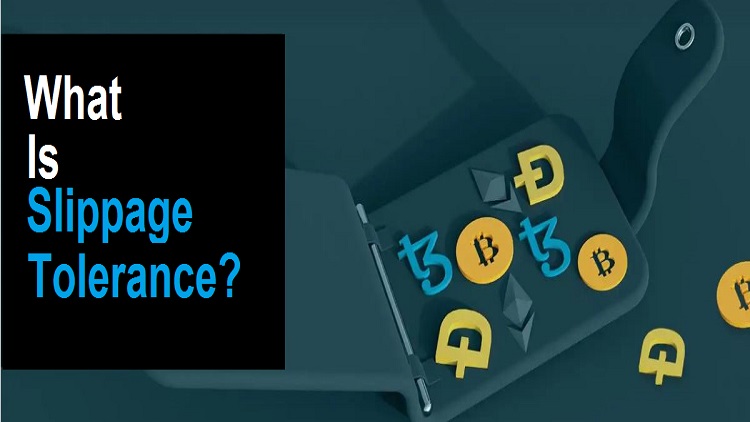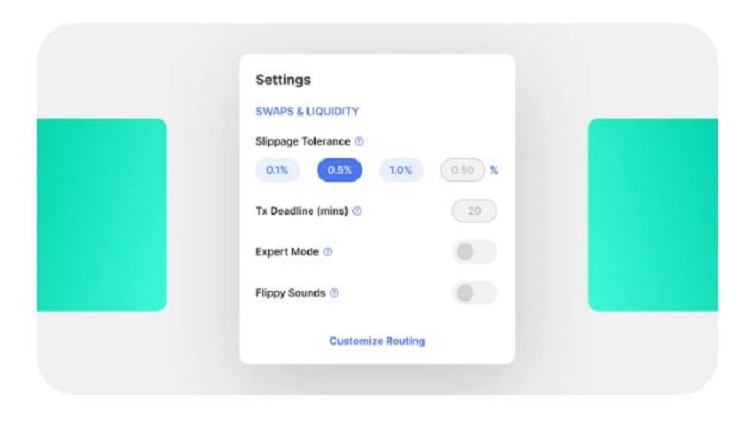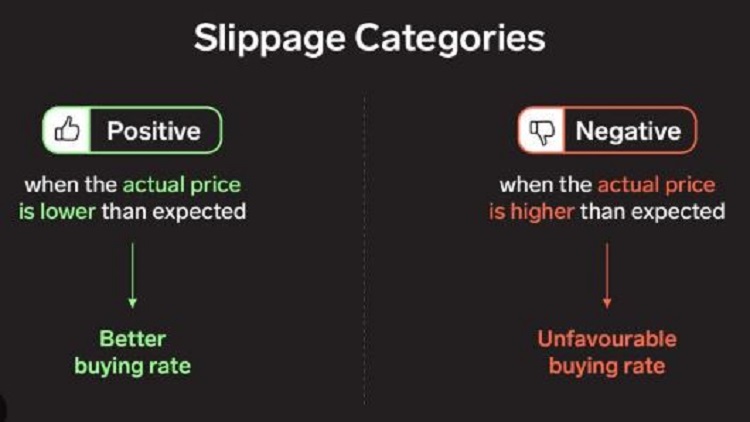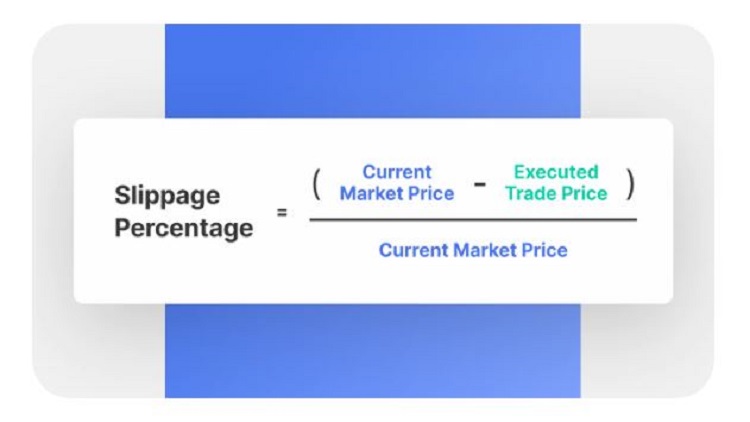The following article “What is Slippage Tolerance?” will help you gain an in-depth understanding of Slippage. This article explains– what is slippage, how it happens, the types of slippage, and how you can reduce it while investing.

Contents
Slippage Overview
In crypto trading, “slippage” is a word you hear a lot. Depending on how it occurs, it can be either an unpleasant surprise or a nice bonus for a trader.
Slippage is when the price you plan to trade doesn’t match the actual price of the trade.
This difference can be good or bad, but as long as there’s a difference, it’s still called slippage.
In simple words, slippage happens when you buy or sell something in a market, but the price you get is not exactly what you expected. This difference in price can be better, worse, or about the same.
Slippage doesn’t just happen in the world of cryptocurrencies. It occurs in various markets like foreign exchange, stocks, futures, and bonds. But it’s more common in cryptocurrency trading because the prices are often going up and down frequently.
Key Points of Slippage
- Slippage is the difference between the current market price and the executed price when trading.
- In crypto trading, slippage often occurs due to two main factors: price volatility and low trading activity.
- You can control and set your acceptable level of slippage by using a “slippage tolerance” setting.
- To calculate slippage, apply this formula: Slippage (%) = [(Current market Price – Executed Price) / Current market Price ] * 100.
About Slippage Tolerance
Slippage tolerance is the gap between the price you want to trade at and the price at which the trade actually happens. Usually, the tolerance level is a percentage of the total trade value.
Slippage tolerance matters a lot when you’re using decentralized exchanges (DEXs) such as Uniswap. Especially for cryptocurrencies that don’t have many buyers or sellers and their prices change a lot.

This setting, called slippage tolerance, is available in many self-custody crypto wallets. It lets you say how much difference in price you’re okay with for a specific trade. Generally, people choose slippage tolerances between 1% and 5%.
How Does Slippage Tolerance Work?
When you set your slippage tolerance, your service provider will try to complete your order within the price range you specified, filling as much as possible.
For Example, let’s imagine a trade involving a fictional cryptocurrency, Ether (ETH).
ETH Price: $2,000
Slippage Setting: 3%
If you were to place a buy order for ETH at $2,000 with a 3% slippage tolerance. The order wouldn’t go through if the ETH price increased by 3% ($2,000 + $60) from when you initiated the trade to when it was actually completed. For selling orders, the same concept applies, but in the opposite direction.
If slippage goes beyond your chosen limit, your transaction will automatically be canceled. However, keep in mind that slippage can also get a better price for your trade!
Causes of Slippage
The following are the main causes of Slippage:
Price Volatility: When the market suddenly becomes unpredictable. In a bumpy market, where prices change quickly, it’s hard to make trades happen exactly as you want.
Low Liquidity: In times of low trading activity, When there are fewer people trading, your orders may not match the prices you had in mind. When there aren’t many people buying or selling, slippage can happen.
Other Reasons: Slippage can occur because of various reasons, like technical problems, the size of your order, or even if you make a mistake. If your internet is unreliable or you place a really big order when the market is unstable, slippage is likely. Also, any errors when you’re submitting orders lead to more slippage problems.
Types of Slippage
Positive Slippage
This occurs when the token’s price drops before your order is completed. Which means you end up buying the asset at a cheaper price.
Negative Slippage
Traders get worried when this happens. It occurs when the token’s price goes up between ordering and executing, reducing your purchasing ability.
You can experience both types of slippages when you sell tokens on an exchange too.

What happens if you set the slippage tolerance too high or too low?
If you set the slippage tolerance too high for a trade, you could agree to a bigger price difference than you like. This might result in increased expenses or unexpected results.
On the other hand, if you set it too low, your transaction may not go through if the price moves even slightly, causing it to fail.
How to Calculate Slippage?
Here’s the formula for slippage:

Slippage (%) = (Current Market Price – Executed Trade Price) / Current Market Price) * 100
Let’s see it in action with a Bitcoin (BTC) buy trade:
For Example, if you wanted to buy 1 Bitcoin at $10,000, but it actually got filled at $10,200. So, your slippage would be $200 (10,000 – 10,200). In this situation, you got a higher price than you had anticipated because of slippage.
Now, plug in the numbers:
Slippage Calculation: (10,000 – 10,200) / 10,000 * 100
The result is: Slippage: 2%
In this buying example, slippage led to a higher fill price. But, it can also result in lower prices.
How to Reduce or Avoid Slippage?
Limit Orders: One of the best ways to lower slippage is by using limit orders. With a limit order, traders can state a specific price at which they want to buy or sell, and the trade will only happen when that price is reached. This way, you get the price you want and prevent unexpected slippage.
Use Slippage Tolerance Controls: Lots of crypto trading platforms come with features to reduce unwanted slippage by stopping your order from moving too far from your chosen limit.
If the price goes beyond your slippage limit, the order won’t go through. But, if the price changes in a way that’s good for you, the exchange will complete the order at a more favorable price.
By monitoring market conditions: Traders can keep an eye on the market to reduce their slippage-related losses. When they stay updated on news and events that might impact the market, they can modify their orders to avoid unexpected price swings and cut down on potential losses.
Trade on reliable exchange: Lastly, choosing a trustworthy and dependable exchange can make a big difference in helping traders lower their slippage-related losses. Reliable exchanges provide lots of people buying and selling, charge low fees, and execute orders quickly. All of these factors work together to decrease the influence of slippage on trade.
Final Words
Slippage is a common part of trading in any market, and it’s something you can’t completely avoid. But that doesn’t mean you’re helpless. You can take some steps to minimize it’s impact.
First, stick to assets that are traded a lot and have many buyers and sellers. Use order types that set limits to deal with unpredictable price changes caused by market ups and downs. Plus, many trading platforms let you control slippage tolerance before you make a trade.
Lastly, always check an economic calendar for any planned announcements that could increase your risk.
Think of slippage as a part of the cost of doing business. It can go your way or against you, but it’s usually a reasonable price, especially if you want to make a quick trade.
The appropriate slippage level that you should set depends on your individual trading strategy, risk tolerance, and specific market conditions. But you can set your slippage tolerance at a reasonable range of 2% to 5%.
Traders can reduce the risk of slippage by using limit orders, setting realistic expectations, avoiding trading during highly volatile times, and choosing assets with higher liquidity.
To manage slippage in high-volatility markets, consider these strategies: Use limit orders, adjust slippage tolerance, trade during stable times, monitor news and events, set stop-loss orders, consider smaller orders, and use trading tools.